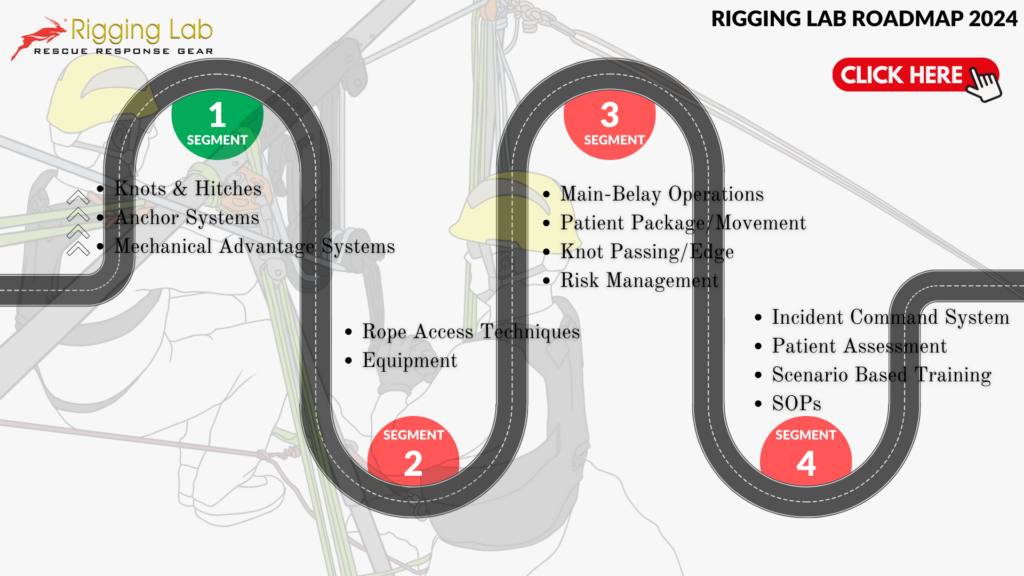After nearly 30 years of living the rope rescue and rigging life, I’ve climbed through changes, held fast to timeless truths, and sometimes dangled in the balance. Looking back, it’s clear the more things change, the more the thrill of the climb stays the same. People get roped into this world for all sorts of reasons—some for the rush, others for the paycheck, and many find both reasons knotting together. But if there’s one thing that tugs at us all, it’s the pursuit of getting better at what we do. So, let’s dive into the fun and serious business of fine-tuning our skills and celebrate the shared goal of mastery in the high-stakes art of rope rescue. Whether for love, money, or the pure joy of a well-executed rig, it’s about ascending to that peak of expertise—and that’s where I’ve pitched my tent.
In the meticulously orchestrated world of rope rescue, the mastery of equipment is akin to a horologist’s communion with the intricate mechanisms of timepieces, each gear and spring working in harmonious precision. Let’s delve into the mechanics of rope rescue equipment, inspired by the image of an elaborate workshop brimming with cogs and wheels, each part synchronized in a ballet of engineering marvel.
Guardians of Gearwork: Rope rescue devices are the intricate cogs and gears of a grand clockwork that ticks with the pulse of urgency. Every pulley, carabiner, and harness is engineered to function within the grand design, ensuring each rescue unfolds with the precision of clockwork.
The Craftsmanship of Rescue: Just as a master clockmaker assembles timepieces, so too does the rope technician skillfully select and employ their apparatus. From the steel sinew of carabiners to the woven muscle of ropes, each piece interlocks within the complex matrix of a rescue operation.
Clockwork of Protection: Harnesses form the mainstay of this intricate machinery, clasping the rescuer in a secure embrace, while helmets shield like the sturdy casing of a chronometer, protecting against the unpredictable elements of nature.
The Carabiner’s Link: These are the pivots and pinions, the connectors that unite the system, forged to bear loads with unyielding resolve, as essential to the rescue rig as a mainspring to a watch.
Prusik Cord Mastery: With the finesse of a watchmaker’s tweezers adjusting a delicate spring, the rescuer manipulates prusik cords, ensuring precise control over their ascent and descent—the very heartbeat of the operation.
Pulley Dynamics: The pulleys operate with the elegance of escapements, translating human effort into mechanical advantage, allowing the weight of reality to be lifted with grace and efficiency.
Technological Timepieces: Mechanical devices within the rescue rig serve as the tourbillons, the complex inventions that counter the effects of gravity and external forces, ensuring the rescue operation runs smoothly under the most grueling conditions.
The Calibration of Skills: Just as a watchmaker calibrates a timepiece, the rope rescue technician tunes their familiarity with their gear, each inspection a meticulous adjustment ensuring reliability in the moment of need.
The Art of Maintenance: Preserving the integrity of this equipment is akin to maintaining a grandfather clock, each cleaning, oiling, and inspection a ritual ensuring that the gears of safety never falter.
Drawing from the inspiration of the image, we understand that rope rescue is a dance of mechanical mastery, a symphony of moving parts and dynamic tensions, each piece vital, each movement critical. It’s within this framework that technicians operate, like maestros conducting the grand orchestra of gears, where every second counts, and every action is a testament to the unfaltering rhythm of rescue.
Peace on your Days
Lance
Drop into Rigging Lab and Rescue Response Gear and See What is New!










